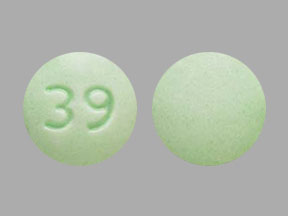Hyoscyamine and Alcohol/Food Interactions
There are 2 alcohol/food/lifestyle interactions with hyoscyamine.
Hyoscyamine Alcohol (Ethanol)
Moderate Drug Interaction
Ask your doctor before using hyoscyamine together with ethanol (alcohol). Use alcohol cautiously. Alcohol may increase drowsiness and dizziness while you are taking hyoscyamine. You should be warned not to exceed recommended dosages and to avoid activities requiring mental alertness. If your doctor prescribes these medications together, you may need a dose adjustment to safely take this combination. It is important to tell your doctor about all other medications you use, including vitamins and herbs. Do not stop using any medications without first talking to your doctor.
Switch to professional interaction data
Hyoscyamine High Blood Pressure (Hypertension)
Minor Potential Hazard, Low plausibility
anticholinergics - hypertension
Cardiovascular effects of anticholinergics may exacerbate hypertension. Therapy with anticholinergic agents should be administered cautiously in patients with hypertension.
Switch to professional interaction data
Hyoscyamine drug interactions
There are 209 drug interactions with hyoscyamine.
Hyoscyamine disease interactions
There are 19 disease interactions with hyoscyamine which include:
- autonomic neuropathy
- GI obstruction
- glaucoma
- obstructive uropathy
- reactive airway diseases
- myasthenia gravis
- infectious diarrhea
- cardiac disease
- tachycardia
- coronary artery disease
- gastric ulcer
- gastroesophageal reflux
- ulcerative colitis
- liver disease
- renal failure
- hypertension
- hyperthyroidism
- diarrhea
- fever
More about hyoscyamine
- hyoscyamine consumer information
- Check interactions
- Compare alternatives
- Pricing & coupons
- Reviews (117)
- Drug images
- Side effects
- Dosage information
- Patient tips
- During pregnancy
- Drug class: anticholinergics/antispasmodics
- En español
Related treatment guides
Drug Interaction Classification
| Highly clinically significant. Avoid combinations; the risk of the interaction outweighs the benefit. | |
| Moderately clinically significant. Usually avoid combinations; use it only under special circumstances. | |
| Minimally clinically significant. Minimize risk; assess risk and consider an alternative drug, take steps to circumvent the interaction risk and/or institute a monitoring plan. | |
| No interaction information available. |
See also:
Further information
Always consult your healthcare provider to ensure the information displayed on this page applies to your personal circumstances.


